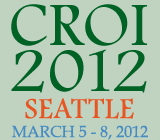
Fairfax, Va.—A new study by researchers at George Mason University and Indiana University provides a large-scale assessment of condom use during the most recent anal intercourse among gay, bisexual, and other men who have sex with men (MSM) in the United States. Findings from this study highlight diversity in condom use behaviors and demonstrate varying degrees of potential risk for HIV and other STIs, regardless of sexual orientation.
The study, published online ahead of print in the Journal of Sexual Medicine, tapped the largest sample of its kind in the United States to examine condom use among MSM. In collaboration with the OLB Research Institute at Online Buddies, Inc., researchers were able to include data from nearly 15,000 men.
According to the study’s findings, one in three acts of anal intercourse between men are condom protected in the U.S.
From a public health standpoint, say the researchers, this study demonstrates that condom use between men involves multiple factors and is influenced by a variety of contextual components including: the nature of the sexual partner, location of sexual encounter, prior intercourse with the partner, and knowledge of partner’s sexual history with others.
“While gay and bisexual men have been the focus of many public health campaigns given the disproportionate impact of HIV and AIDS in their communities, there remains a need to understand how these men live their sexual lives and the manner in which the specific characteristics of their sexual activities influence condom use,” said co-author Michael Reece, director of IU’s Center for Sexual Health Promotion. “A one size-fits-all approach to increasing condom use does not work better among these communities than we would expect it to for their heterosexual counterparts.”
Lead author Joshua G. Rosenberger, professor in the Department of Global and Community Health in the College of Health and Human Services at George Mason University, said the study is the one of the first to explore condom use at the event level among a national sample of MSM.
“As such, this study was focused primarily on a single sexual event — the most recent — and therefore these data are able to provide a level of detail about MSM condom use that has not previously been documented,” he said.
A major strength of this study was the inclusion of unique data points designed to capture information regarding men’s ejaculatory behaviors. In total, only 2.5% of the entire sample reported that ejaculation occurred in either their own or their sexual partner’s anus without a condom during most recent anal intercourse.
“While MSM have been traditionally categorized as ‘high risk,’ these data suggest that our current framing of risk based solely on gendered sexual behavior may be shortsighted,” said Rosenberger, “Rather, in order to appropriately identify men who are at increased risk for disease acquisition, clinicians must inquire more thoroughly about potential modes of disease transmission.”
Additional key findings include:
- Rates of condom use were highest among men ages 18–24.
- Men who identified as black, Hispanic/Latino, and Asian were all significantly more likely than those who identified as white to report a condom being used during their most recent anal intercourse with another man.
- Men who indicated that they were not in a romantic relationship with their most recent male sexual partner were significantly more likely to report a condom being used during intercourse.
- Men were more likely to have used a condom when intercourse occurred in their sexual partner’s home or a hotel/motel, compared with other locations including in a car/truck/van.
Study authors include Joshua G. Rosenberger from GMU’s Department of Global and Community Health; Michael Reece, Vanessa Schick and Debby Herbenick , Center for Sexual Health Promotion, IU School of Health, Physical Education and Recreation; Barbara Van Der Pol, Department of Kinesiology, IU School of HPER; J. Dennis Fortenberry, IU School of Medicine; and David S. Novak from Online Buddies Inc. Online Buddies is one of the world’s largest operators of Internet websites for men who seek social or sexual interactions with other men.
Click HERE to read about the study on the George Mason University Website








